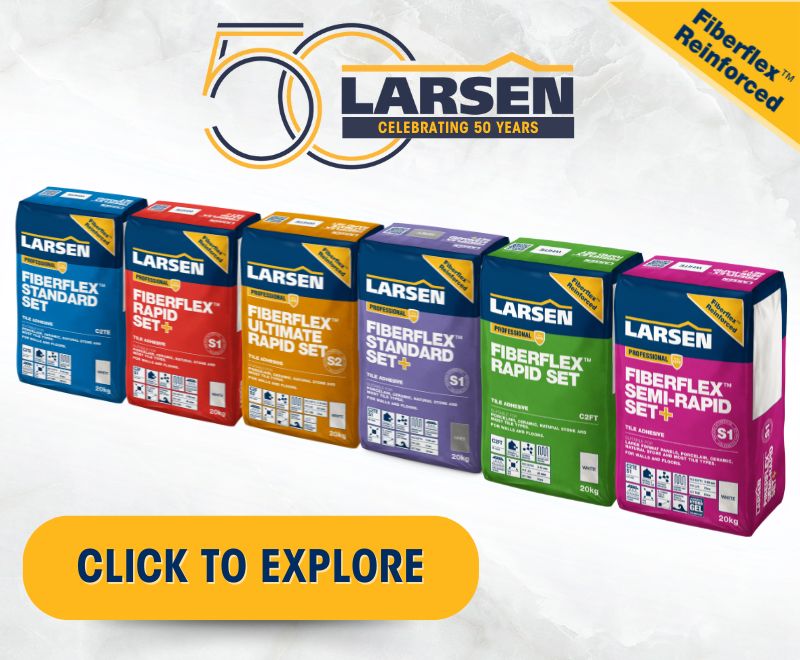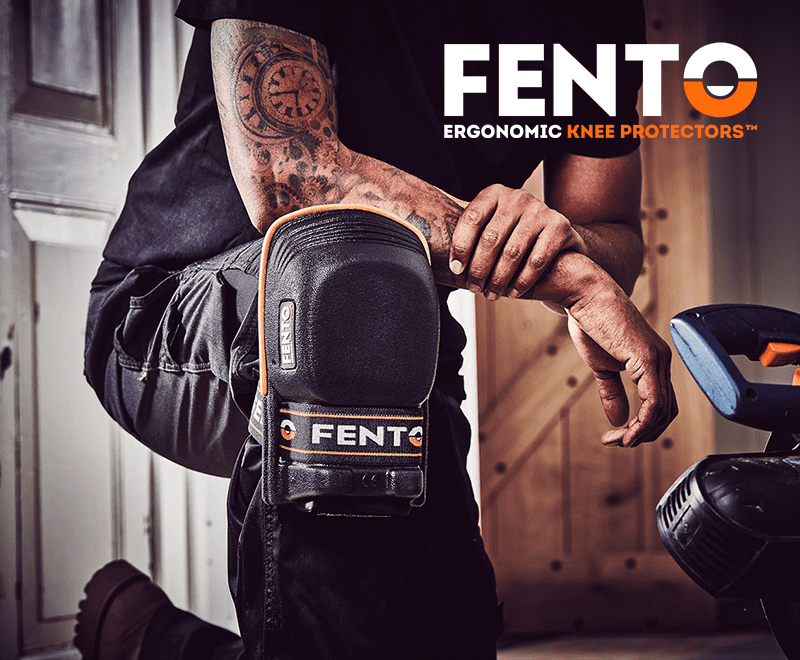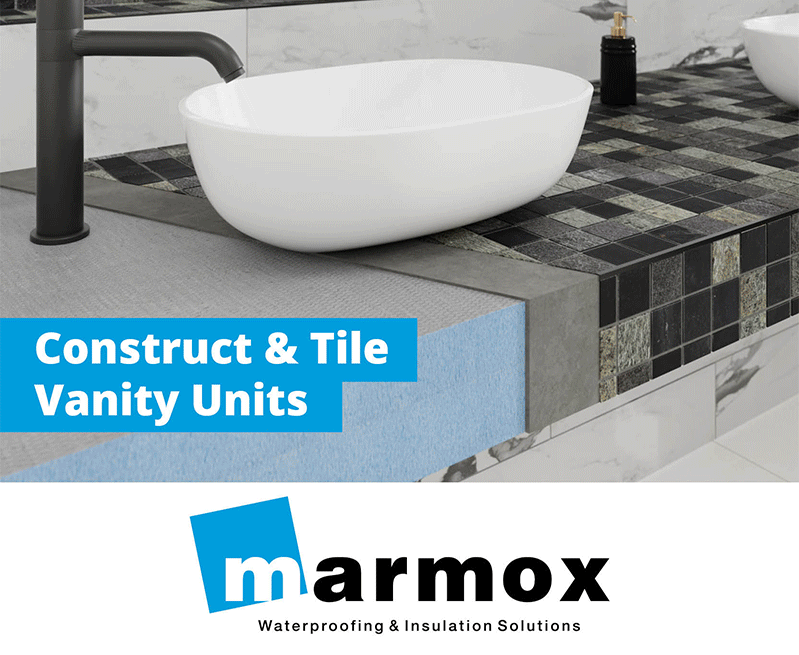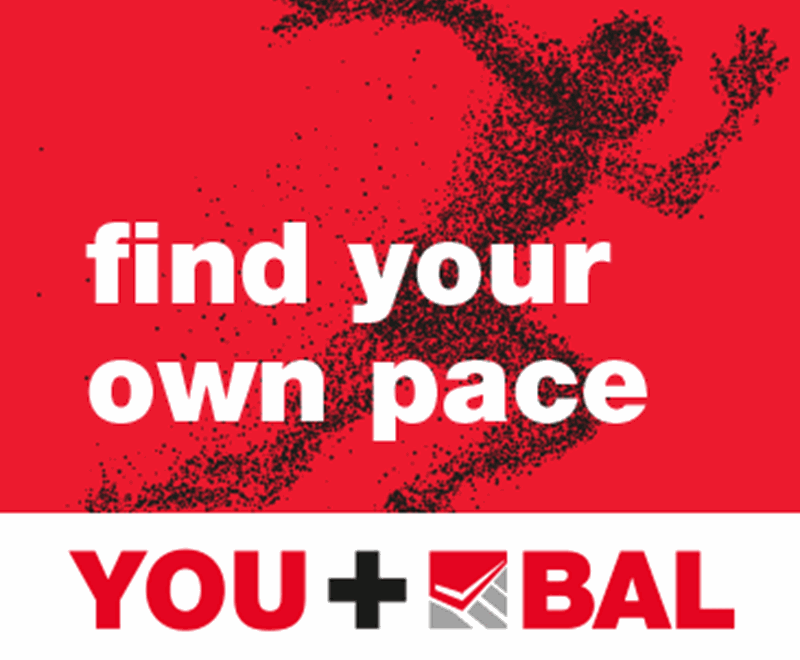James Hailstones, ARDEX training and technical support manager, details the essential preparation that needs to be considered when tiling onto underfloor heating systems
WITH their popularity increasing by the year, heated floors are rapidly becoming the norm for tilers when starting on a job – even with refurbishment projects with the advent of retrofit systems and electric under-tile systems.
A key consideration with underfloor heating projects is compensating for movement stress that can build up in a heated floor during the heating and cooling cycles. Therefore, it’s important the coefficient of thermal expansion of the rigid tiled finish doesn’t vary too much from the heated subfloor.
This is because small changes in expansion and contraction exert greater stresses on rigid tile finishes. In addition, to reduce the risks of tiles cracking or de-bonding, adequate preparation and, where applicable, commissioning of the floor heating system is crucial – as is the correct selection of adhesive and grout. Here we list the essential preparation for each type of system:
Hot water pipe system (in screed)
If tiling onto a hot water pipe system, ensure the screed has fully dried. In the case of reinforced cement; sand based screeds this ranges from six days with a quickset screed to a minimum of three weeks for a screed containing OPC. Following this period of curing, the screed may be commissioned by heating slowly at a maximum rate of 5deg C per day up to the maximum operating temperature as recommended by the heating manufacturer. The temperature of the screed should be maintained at this level for a minimum of three days, before allowing it to cool to room temperature.
For anhydrite or alpha hemihydrate calcium sulphate screeds, surface preparation is also critically important. The drying times are dependent upon the thickness of screed and could be extended further, dependent upon site conditions. Further guidance may be sought from our technical department or the screed manufacturer.
Again, commissioning of the screed should be carried out in accordance with the heating manufacturer. The heating may also help with increasing the drying rate of the screed.
Ensure the heating system has been turned off, or on in cold temperatures, to ensure the screed is at 15deg C before tiling commences.
Overlay/retrofit systems
There are also numerous overlay or retrofit systems on the market which require unique preparation and can vary in installation from manufacturer to manufacturer. These retrofit systems come in several different materials from gypsum boards to XPS boards – and can be coated in anything from felt to foil coverings.
These require different methods of installation and preparation – and necessitates expert technical guidance.
The ARDEX Group can offer recommendations for certain retro-fit systems including Polypipe Overlay and Overlay Plus boards.
Electric cable systems
When using cable systems check with the manufacturer to ensure the system is compatible with the intended substrate and application areas, such as kitchens or bathrooms for example. Backgrounds may require priming. The cables should ideally be encapsulated in a layer of a suitable fibre-reinforced self-smoothing levelling compound. When using an uncoupling system, the heating cables should be below the uncoupling membrane.
Heating carrier mats
Again, check with the manufacturer the chosen system is compatible with the substrate and environment it’s being used in. Backgrounds may require priming before the installation and application of subsequent levelling compounds or tile adhesives.
Movement joints
Movement joints should be incorporated at all perimeters of the screed, including upstands, door thresholds between separate areas of use or anything which penetrates the screed, such as columns or pillars. Movement joints are usually formed while the screed is being laid. Movement control joints should penetrate the full depth of the screed to the insulation layer.
Once tiling commences, movement joints should be incorporated to coincide with those in the screed. For floors subject to thermal changes, such as underfloor heating, floor areas should be divided up by movement joints into bays of size, no greater than 40sq m for ceramic and natural stone with an edge length, not greater than 8m.
Movement joints should also be located at the junction between heated and unheated screed sections.
Further advice should be sought from BS 5385: Part 3, the code of practice for internal and external ceramic floor tiling and The Tile Association’s technical document: Tiling to heated floors.
If using an uncoupling mat – which we would always recommend with an underfloor heating system – the mat should be separated where intermediate movement joints are located.
Suitable adhesives
When tiling onto underfloor heating systems ensure you use a suitable flexible polymer modified tile adhesive, to allow for natural thermal movement in the floor.
We have several flexible tile adhesives in the ARDEX Group which are suitable for underfloor heating – including those which are fibre-reinforced, which provides extra strength and flexibility.
Suitable grout
As with your adhesive choice, your chosen grout should also be flexible to allow for thermal movement. Owing to the large number of heating systems on the market, we would also recommend contacting our technical department or training and technical team for advice before any work is carried out.
For full technical advice and specification support speak to an ARDEX Group technical support manager.
www.ardex.co.uk
www.bal-adhesives.co.uk










